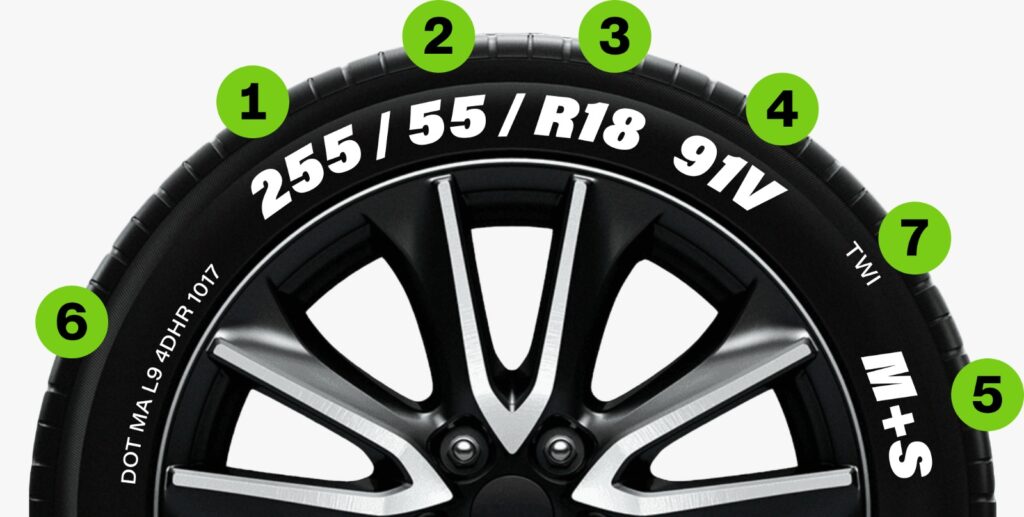Tyre designations
For each car model, tyre manufacturers have identified the most suitable tyre parameters and characteristics that are essential to optimum performance, handling, and stability on the road.
If tyres don’t meet the manufacturer’s recommendations, the car’s handling is reduced, the risk of accidents increases significantly, and the damage to the car’s mechanical parts is increased. Therefore, when choosing new tyres, the specifications must match the requirements of the car model.
How to Read Tyre Markings
Tyre markings on the sidewall provide all the technical information on tyre size, load capacity, type, age, and other parameters that are essential for safe and comfortable driving. Tyre specifications are marked with a series of numbers and letters; for example, in the marking 205/55R16 91V:
- The first number (205) defines the tyre width in millimetres, measured from one side of the tyre to the other;
- The second number (55) represents the height of the tyre tread in relation to the width of the tyre as a percentage;
- The capital letter (R) represents the type of internal structure of the tyre. The capital letter R stands for tyres with radially arranged cords, and B stands for tyres with diagonally arranged cords;
- The third number (16) indicates the tyre rim diameter in inches;
- The fourth number (91) represents the load index of the tyre. This value indicates the maximum weight that the tyre can support at optimum inflation pressure; and
- The final capital letter (V) on the label represents the speed coefficient or maximum operating speed of the tyre.
The Dot Code
The DOT code displays tyre manufacturing information and is drawn up in accordance with the US Department of Transportation safety requirements, allowing consumer to verify the time and place of tyre manufacture. For example, in the marking DOT MA L9 4DHR 1017:
- The first two symbols after the DOT marking (MA) are the tyre manufacturer’s code. Each tyre manufacturer has its own unique combination of letters and numbers;
- The next two or three elements of the code (L9) make up the size code defined by the tyre manufacturer, which helps to identify the size, series, or type of a particular tyre according to the manufacturer’s classification;
- The four symbols in the middle of the code (4DHR) are the manufacturer’s optional code, which may contain additional information on the tyre’s characteristics or specifications; and
- The last four digits (1017) in the code represent the date of manufacture of the tyre. The first two digits indicate the week of the year and the last two the year in which the tyre was manufactured.
Seasonal Designations
- The M+S (Mud and Snow) label indicates the tyre’s ability to provide good grip and performance in changing weather conditions on roads with a light layer of mud or snow;
- The 3PMSF (Three-Peak Mountain Snowflake) label or symbol indicates tyres suitable for severe winter conditions like cold temperatures and snowy or icy roads; and
- AS, 4S, or AW markings indicate all-season tyres that are suitable for summer and milder seasons.
Tire Tread Wear Indicator
The tire sidewall features the indicator marking the capital letters TWI. This marking helps the driver to visually determine the minimum depth of the tire tread. If the tire is worn down to the indicator mark, the tire must be replaced immediately.
Mounting Indicators and Other Markings
1. The TL marking indicates a tubeless tire;
2. RFT, ROF or SSR indicate run-flat tyres.
